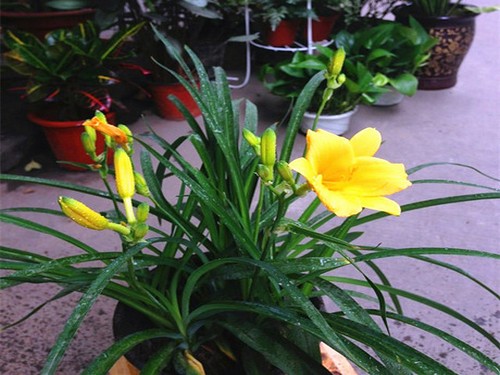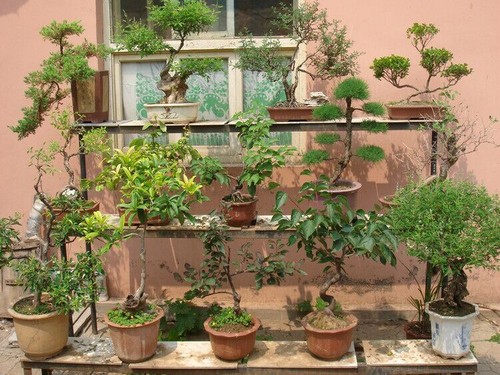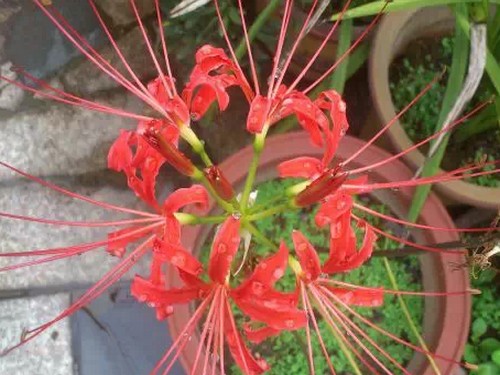Planting technique of Hemerocallis
Although hemerocallis flowers are mainly produced in China, they have not been improved for a long time. After the 1930s, some botanical gardens and horticulturists in the United States collected plants of the genus Hemerocallis from China, Japan and other countries for cross breeding. now there are more than 10,000 varieties, which has become an important ornamental and cut flower. it is also the largest variety of flowers in the lily family. At the same time, Hemerocallis is also the mother flower of China.

Hemerocallis likes warm sunshine, tolerance to semi-shade, drought resistance, strong resistance to diseases and insects, and wide adaptability. Like fertile, moist, deep soil, but also resistant to barren and dry, extensive management. The rhizome can survive the winter safely in low-temperature permafrost and has a certain resistance to saline-alkali soil.
Like a warm and humid environment. The soil is better with slightly stickiness. It can be cultivated in fields, ditches, houses and other places. Propagate in separate plants. From October to November, after the shoot withered or before the plant sprouted in spring, the whole plant was dug up and divided into a cluster every 2 or 3.
The management of water and fertilizer of Hemerocallis is simple. Because of its long flowering period, it needs topdressing two or three times before and during flowering, in addition to applying sufficient base fertilizer during planting. Mainly to supplement phosphorus and potassium fertilizer, 0.2% potassium dihydrogen phosphate can also be sprayed to promote the hypertrophy of flowers and achieve the effect of prolonging florescence.
Before planting, according to the row, plant distance of each 40cm hole, hole depth 17~20cm, each hole planted a clump, the root should be laid in all directions, cover the soil tight. Water or irrigate human and animal dung water. Since the second year, weeding and topdressing three times a year, the first time in March, the second time before flowering in June, the third time after falling seedlings in October, after each intertillage and weeding, the application of human and animal manure water.
Hemerocallis has a strong ability to divide iniquity, and the plant spacing must be kept at 20 cm × 20 cm when planting. After planting, remove the weeds in the field of Hemerocallis in time, if the weeds are clustered, it is easy to cause diseases and insect pests, affecting the growth and appearance of Hemerocallis. Cutting off the stump after flowering can promote flowering again.
The cultivation management is simple and extensive, the row spacing is about 0.5 × 1 m, and 3 plants are planted in each hole. Apply enough base fertilizer before planting. Because of its strong adaptability, Hemerocallis can be planted almost anywhere, and the plant cluster can be expanded year after year, but it should be matched according to plant height and flower color in the garden in order to improve the ornamental effect.
The cultivation of hemerocallis is required to be planted in soil with good drainage, no stagnant water in summer and rich in organic matter. Because of its strong tillering ability, the plant row spacing should be kept at 30cm × 40cm when planting. The cultivation and management of hemerocallis is relatively simple, because of the long flowering period, in addition to applying sufficient basal fertilizer (with rotten cow manure or pig manure), topdressing is needed for 2 or 3 times before and during flowering, mainly to supplement phosphorus and potassium fertilizer. 0.2% potassium dihydrogen phosphate can also be sprayed to promote the hypertrophy of flowers and achieve the effect of prolonging florescence, cutting off flower stems from the ground after flowering and removing withered leaves at the base of plant clusters in time.
Hemerocallis can also be potted, but dwarf varieties, such as "Jinwa", must be selected when planting. The basin soil can be prepared with 4 ∶ 3 ∶ 2 ∶ 1 peat, pine needle, cow dung and garden soil. After planting, pay attention to plastic surgery to make sure that the plant clusters are symmetrical.
Time: 2019-05-25 Click:
- Prev

Planting methods and matters needing attention of potted flowers
Lingxiao is one of the famous garden flowers. Its flowers are funnel-shaped, bright red or golden yellow and brightly colored. When the flowers bloom, the shoots still continue to spread and grow, and the new shoots bloom for the second time, so the flowering period is longer. Lingxiao flower is a vine, like climbing, is an excellent plant for greening in the courtyard, with thin bamboo support can be woven into a variety of patterns
- Next

How to plant the flowers on the other side
For a long time, the Chinese decorative style is mainly to advocate solemnity and elegance, pay attention to the beauty of symmetry. In terms of color, red and black are the most, these two colors make people feel strong and mature, full of connotation. The red other shore flower has a special flavor at home.
Related
- Fuxing push coffee new agricultural production and marketing class: lack of small-scale processing plants
- Jujube rice field leisure farm deep ploughing Yilan for five years to create a space for organic food and play
- Nongyu Farm-A trial of organic papaya for brave women with advanced technology
- Four points for attention in the prevention and control of diseases and insect pests of edible fungi
- How to add nutrient solution to Edible Fungi
- Is there any good way to control edible fungus mites?
- Open Inoculation Technology of Edible Fungi
- Is there any clever way to use fertilizer for edible fungus in winter?
- What agents are used to kill the pathogens of edible fungi in the mushroom shed?
- Rapid drying of Edible Fungi

